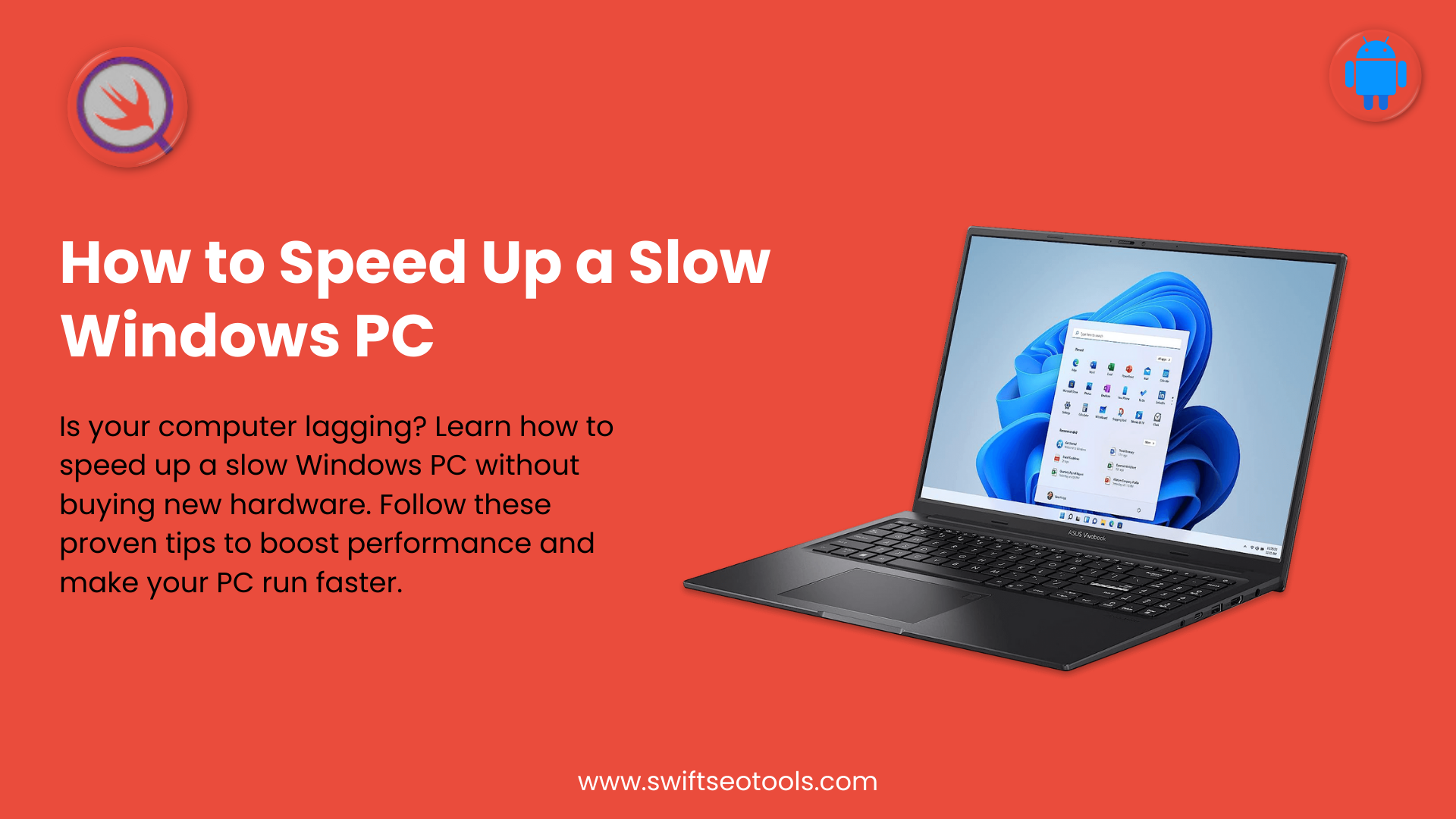
How to Speed Up a Slow Windows PC Without Buying New Hardware
How to Speed Up a Slow Windows PC Without Buying New Hardware
 Published by: Nnaemeka Immanuels
Published by: Nnaemeka ImmanuelsA slow Windows PC can be one of the most frustrating obstacles for students, professionals, and businesses alike. Whether it’s lagging during a Zoom meeting, freezing while editing a document, or taking forever to boot, poor performance can significantly impact productivity.
The good news is you don’t always need to invest in new hardware. With the right strategies, you can breathe new life into your existing computer. This article explores proven methods to speed up a slow Windows PC in 2025 without spending a dime on upgrades.
Why Do Windows PCs Slow Down Over Time?
- Too many background applications consuming resources.
- Fragmented or cluttered storage.
- Outdated software or drivers.
- Malware or adware infections.
- Inefficient startup settings.
Story: A freelance writer in Lagos reported that her five-year-old Windows laptop was nearly unusable. Instead of replacing it, she optimized the startup apps, ran a cleanup, and uninstalled unused programs. Within two days, her device became fast enough for writing, browsing, and streaming again—saving her $800 in potential replacement costs.
12 Proven Tips to Speed Up Your Windows PC Without Hardware Upgrades
1. Disable Unnecessary Startup Programs
Many applications automatically launch when you start your PC, slowing boot time.
How: Open Task Manager (Ctrl+Shift+Esc) → Startup tab → Disable unnecessary apps.
Case Study: A university IT team in Canada found that disabling startup programs reduced boot time on lab computers by 60%.
2. Uninstall Bloatware and Unused Programs
PCs often come with pre-installed apps you never use. These eat storage and memory.
How: Go to Settings → Apps → Installed apps and remove what you don’t need.
Story: A gamer in India uninstalled 15 unused apps and freed up 12GB of space, improving overall speed.
3. Use Windows’ Built-In Disk Cleanup
Temporary files, cached data, and system logs accumulate over time.
How: Type Disk Cleanup in the search bar → Select drive → Clean up system files.
4. Turn Off Visual Effects
Animations look nice but consume resources.
How: Right-click This PC → Properties → Advanced system settings → Performance → Adjust for best performance.
Case Study: An office in Nairobi reported smoother multitasking on older PCs after disabling animations.
5. Update Windows and Drivers
Outdated systems often perform poorly.
How: Go to Settings → Windows Update → Check for updates. Use Device Manager for drivers.
6. Run Malware and Adware Scans
Malware hides in the background, draining resources. Use Windows Defender or trusted antivirus software.
7. Free Up Storage Space
When storage is full, performance slows. Use Storage Sense in Windows 11 to remove junk automatically.
8. Defragment and Optimize Drives
For HDDs, defragmentation improves speed. SSDs benefit from “Optimize.”
9. Adjust Power Settings
Switch to High Performance mode: Settings → System → Power & Battery.
10. Limit Background Apps
Windows runs many background apps unnecessarily. Turn them off in Settings → Privacy → Background apps.
11. Clear Browser Cache and Extensions
If slowness occurs while browsing, clear cache and remove unused extensions.
12. Reset or Refresh Windows (Last Resort)
Go to Settings → System → Recovery → Reset this PC. Restores performance like new.
Bonus Tip: Use Cloud Services
Instead of overloading your PC with large files and software, use Google Drive, OneDrive, or Dropbox to store data and run apps online. This reduces strain on your local storage.
Final Thoughts
You don’t need new hardware to fix a slow Windows PC. By disabling startup apps, cleaning up storage, updating software, and optimizing settings, you can make your PC run faster, more efficiently, and last longer.
References
- Microsoft Support – Improve PC Performance in Windows
- CNET – How to Speed Up Windows PCs
- PCMag – Windows Optimization Tips 2025
- The Verge – Windows 11 Performance Tricks
- TechRadar – PC Cleanup and Performance Boost
- HowToGeek – Disable Startup Programs in Windows 11
- Wired – Why PCs Slow Down Over Time
- Computerworld – Malware and System Performance
- ZDNet – Windows Updates and Driver Management
- Lifewire – How to Reset Windows 11
Frequently Asked Questions
How can I make my Windows PC faster for free?
You can disable startup apps, uninstall unused programs, clean storage, update Windows, and run malware scans—all free methods to boost speed.
Is it better to reset Windows or buy a new PC?
Resetting Windows often restores performance. Try optimization first before investing in new hardware.
Do SSDs need defragmentation?
No. SSDs only need optimization, not defragmentation, unlike HDDs.
.png)
Nnaemeka Immanuels
Founder SwiftSEOTools
Immanuels is the founder of Swift SEO Tools, a free platform offering smart SEO tools for improving domain authority, backlinks, and content optimization. Passionate about accessible SEO, Wankiss helps creators and marketers grow their organic traffic with ease.
.png)




